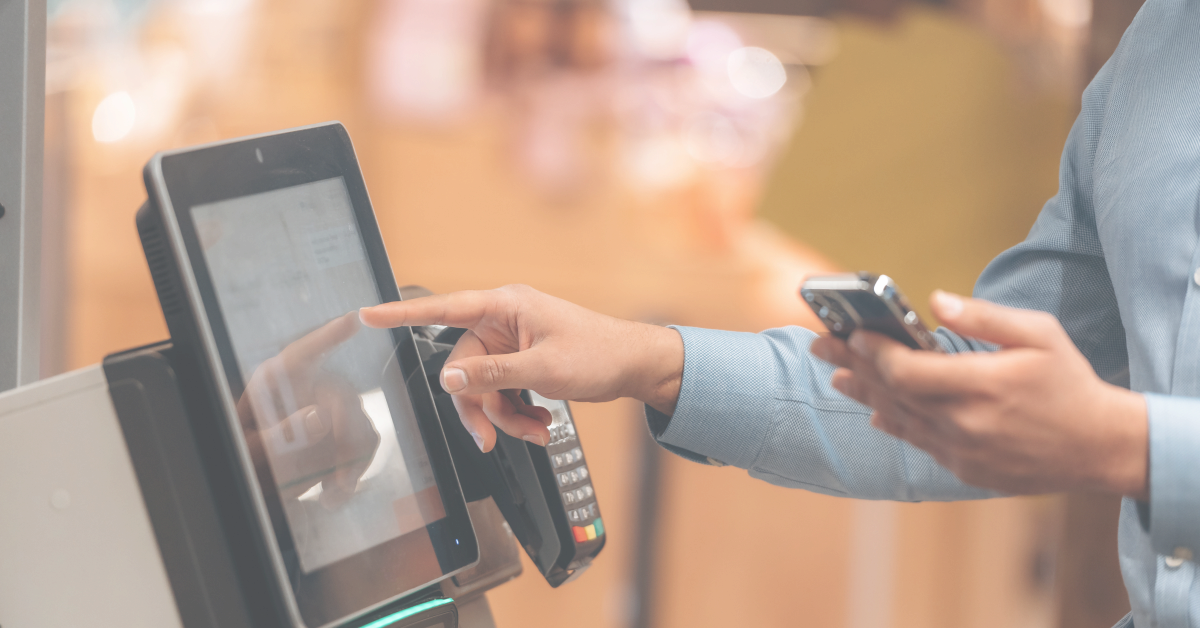Influence buying behavior and boost conversions
Understanding what motivates customers to make a purchase goes beyond product features or pricing. Businesses that strategically influence buying behavior can increase conversions, strengthen loyalty, and improve customer lifetime value. Every step of the buying journey provides opportunities to guide decisions through psychological and emotional triggers.
In this article, we'll discuss practical ways to influence buying behavior. By putting these methods into action, marketing, sales, and loyalty professionals can design experiences that naturally lead customers toward purchase. For more practical tips on driving conversions, check out our guide to improving customer retention.
The role of trust in purchase behavior
Trust is what makes every buying choice possible. Brands that consistently demonstrate their reliability, transparency, and credibility are far more likely to win over customers. If you don't build trust, even the best marketing or lowest prices might not be enough to turn a potential buyer into a customer.
Here are a few ways trust can influence buying behavior:
Clear communication:
Honest and precise product descriptions play an important role in reducing doubt and building buyer confidence. For instance, when an online retailer lists dimensions, materials, and care instructions, shoppers can assess whether a product meets their needs—ultimately increasing the likelihood of purchase. One study in cross-border e-commerce reveals that high-quality product descriptions significantly enhance cognitive and affective involvement, which then boosts purchase intention in cross-border e-commerce contexts.
Consistency
Giving customers a consistent experience across all touchpoints builds trust in the brand. For example, a subscription service that always ships on time and maintains product quality makes things more predictable, increasing the likelihood that customers will buy from the same company again. Therefore, consistency signals professionalism and reduces the perceived risk associated with buying. A recent study on omnichannel e-commerce published in Heliyon shows that giving customers the same experience across all channels builds trust and makes them more likely to buy.
Ethical practices
Transparency about sourcing, pricing, and business operations builds credibility with consumers. A coffee brand that openly shares fair-trade certifications and sustainable sourcing practices earns trust and attracts ethically conscious buyers. Research in sustainability demonstrates that ethical business practices and corporate social responsibility positively influence consumer trust and purchase intention.
By focusing on clear communication, consistent delivery, and ethical practices, brands actively boost customer confidence and positively influence buying behavior. Basically, building trust with customers at all stages of their journey leads to more sales and better brand loyalty. For more insights on turning trust into repeat business, check out this article.
Using urgency and scarcity effectively
Creating urgency or scarcity motivates buyers to act quickly and helps reduce decision delays. Customers are more likely to commit when they think they have a limited chance or supply. This advantage makes these techniques powerful ways to influence buying behavior. Below are some effective techniques:
Limited-time offers
Setting clear goals helps people make choices more quickly. For example, an online retailer offering a “24-hour flash sale” may encourage customers to act right away rather than delaying their purchase. A study published in the Journal of Business Research shows conversion rates are greatly increased when urgency and a clear value proposition are combined.
Low-stock alerts
Highlighting limited supply increases the perceived value. For instance, e-commerce platforms often display messages like “Only 3 left in stock,” which nudges buyers to purchase before missing out. A meta-analysis of 131 studies on scarcity tactics found that such scarcity cues (limited quantity/time) significantly boost purchase intention and perceived product desirability.
Exclusive deals
Giving customers access to early-bird discounts or members-only promotions makes them feel privileged and valued. For example, a loyalty program granting early access to new product lines can enhance engagement and drive repeat purchases. A study by The Effect of Deal Exclusivity on Consumer Response to Targeted Price Promotions: A Social Identification Perspective (Barone & Roy, 2010) found that deal exclusivity positively affects consumer responses to targeted promotions, increasing both perceived value and purchase intention.
Additionally, using urgency and scarcity responsibly preserves trust. When executed transparently, these tactics accelerate decision-making while maintaining credibility. For actionable guidance on creating high-impact promotions, see our post on returning customers as your greatest growth asset.
How personalization increases conversions
Personalized experiences make buyers feel understood, which in turn boosts relevance and purchase intent. For instance, tailored product recommendations, customized emails, and behavior-driven content capture attention and encourage action.
Additionally, a recent study by Tomar & Pandey (2024) on personalized advertising shows that personalized advertising improves customer engagement and increases conversion rates. Personalized content also increases the likelihood that customers will make a purchase and gives them a sense of recognition.
Consequently, by ethically using customer data to deliver personalized experiences, brands can directly influence buying behavior and increase conversions. For actionable guidance, read further on this blog about loyalty trends.
Leveraging social proof and reviews
Social proof lowers uncertainty by showing that others have had positive experiences with a product or service. As a result, testimonials, reviews, and ratings can significantly influence buying behavior and boost customer confidence.
Consider these strategies:
- Customer reviews: Emphasize real experiences on product pages. For example, a customer is more likely to trust a product if they read detailed reviews from other similar customers.
- Ratings and scores: Show overall satisfaction metrics, such as star ratings or average scores, to give a quick sense of quality and reliability.
- User-generated content: Share pictures or videos from real buyers. This gives potential buyers real social proof and visually engages them.
Moreover, a study by Social proof in social media shopping: An experimental design research (Talib & Saat, 2017) found that social‐proof techniques, such as a high number of followers or community recommendations, significantly influence consumers’ purchase intentions on social media. Using these techniques, brands can strategically influence buying behavior across their audience by actively featuring genuine reviews and community endorsements.
Influencing buyers through loyalty programs
Loyalty programs are effective strategies for encouraging repeat purchases and sustaining long-term engagement. By offering rewards, discounts, or exclusive perks, brands can strategically influence buying behavior while strengthening customer relationships.
Well-designed programs often combine multiple elements to maximize impact. For example, points and rewards encourage repeat purchases, while tiered benefits create aspirational goals that motivate continued engagement. Research from a recent study on loyalty card programs in the Albanian retail market shows that loyalty programs that offer both benefits and unique experiences have a big effect on how many customers stay with a business and how many buy from them again.
For brands looking to implement or refine these initiatives, understanding the fundamentals of loyalty programs is essential, and a detailed guide provides practical insights to get started.
Behavioral segmentation strategies
Behavioral segmentation allows marketers to influence buying behavior by targeting customers based on actions rather than just demographics. By understanding how customers interact with products, websites, or campaigns, brands can deliver more relevant messaging, improve engagement, and increase conversion rates.
Best practices for behavioral segmentation:
Track customer actions
Start by monitoring behaviors, such as frequent purchases, abandoned carts, click patterns, and high-engagement activities to understand intent. For example, research by The Role of Browsing and Checkout Behavior in Predicting Purchase Decisions (2012) indicates that marketers can predict future buying choices and improve targeting by looking at how people browse and buy things online. Additionally, tracking repeated visits or abandoned carts provides insights for timely, personalized interventions.
Tailor campaigns
Once you understand behavior patterns, you can make offers and messages that appeal to each group. For example, frequent buyers may receive loyalty rewards, while first-time visitors might get onboarding discounts. A recent study on consumer behavior tracking and smart algorithms indicates that behaviorally tailored campaigns significantly improve engagement and conversion rates. By using behavior-based targeting, brands can make promotions feel relevant and less generic.
Analyze and refine results
Continuously measure campaign performance within each behavioral segment. Metrics such as click-through rates, repeat purchase frequency, and engagement scores show which strategies work. Moreover, applying insights from A/B testing and predictive analytics makes sure segments remain accurate and effective over time. A study published in the Journal of Business Research highlights that iterative analysis of behavioral data enhances campaign ROI and decision-making.
Reward and incentivize desired actions
Encourage repeat behaviors by offering rewards or incentives based on segment-specific activity. For example, giving extra points to customers who buy a certain type of product often promotes good buying habits. A recent study on loyalty card programs in the Albanian market have shown that matching rewards to behavior improves both trust and the desire to buy. In this way, bonuses stop being just extras during a purchase and start being used as tools to influence buying behavior strategically.
Predict future behavior with algorithms
Use machine learning and AI to anticipate customer needs and segment dynamically. By analyzing historical actions, purchase frequency, and engagement patterns, predictive models can identify emerging trends and preferences. A ResearchGate study on predictive analytics in customer behavior demonstrates how these insights help brands make data-driven decisions and anticipate customer needs effectively. Consequently, businesses can proactively influence buying behavior rather than only reacting after the fact.
By applying these strategies, marketers can make campaigns that are highly relevant and connect with each audience group. This makes it easier for them to influence buying behavior and increase conversions.
Conclusion
Understanding what motivates customers to purchase goes beyond price or features. Brands that actively shape how customers buy by using trust signals, creating a sense of urgency, personalizing experiences, showing social proof, designing for loyalty, and segmenting behavior tend to have more sales.
To put this into action, check the clarity of your message, be clear about when you use urgency and scarcity, show credible reviews, and personalize journeys with behavioral signals. According to an article from Medill Spiegel on how online reviews influence sales, showing reviews can increase the chance of a purchase by up to 270%. This shows that social proof speeds up decisions.
Which lever will move the needle for you this quarter—clearer trust signals, smarter personalization, or a refreshed loyalty strategy? Explore more practical playbooks and case-backed tactics across our blog to keep refining how you influence buying behavior.
You May Also Like
These Related Stories
.png)
Customer experience optimization explained: tools, tips, and trends
Learn what customer experience optimization is and why it's important for your business, with proven tools, tips, and trends for long-term growth.

Customer retention software: what to look for and why it matters in 2025
Discover why customer retention is more important than ever in 2025, and what to look for in software that helps keep customers, boost loyalty, and pr …

Influence customer behavior: how to understand and shape buying decisions
Understanding how to influence customer behavior is important in today’s competitive market, giving brands a long-term advantage by disclosing what cu …